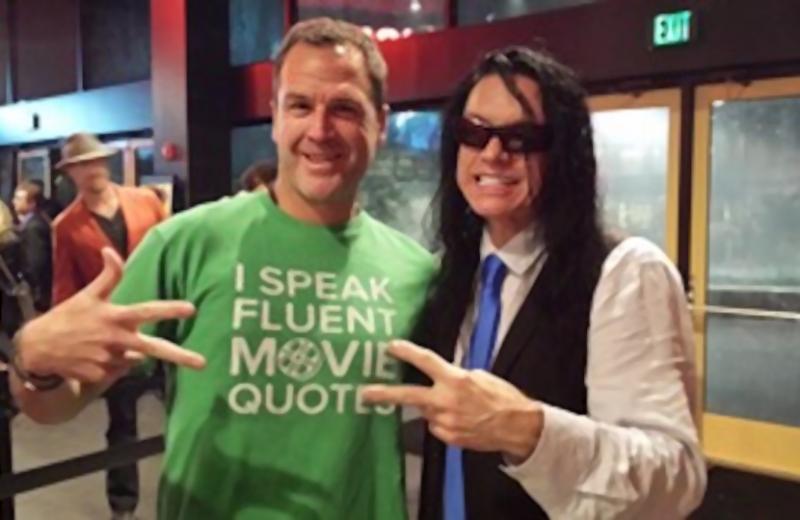Recommending the film “The Room” to someone is like inviting them to tour your house...after a raging fire. It’s awe-inspiring in its tragedy. Hard-core lovers of bad cinema often refer to “The Room” as the Rosetta Stone of Rotten: it’s a curiosity of unbridled egotism that has garnered a rabid cult following for its unintended hilarity since its release in 2003.
It’s a Tennessee Williams-style melodramatic potboiler of ramen noodles: it will certainly fill you up, but you will most likely hate yourself for how unhealthy it truly is. The film was written, directed, produced and stars an enigmatic man by the name of Tommy Wiseau, he of thick Eastern European accent, 80s-rocker hair and only the faintest grasp of the English language...or even how human beings actually interact with one another.
The ascent of this truly original cinematic curio in the cult circuit has led to a book by one of its leads, titled “The Disaster Artist: My Life Inside The Room, The Greatest Bad Movie Ever Made.” Author/co-star Greg Sestero chronicled the behind-the-scenes chaos, as well as the odd relationship he formed with the impenetrable Wiseau.
The book has been co-opted by actor James Franco, who transformed it into “The Disaster Artist,” serving as both director and lead for the film. James’ sibling Dave was brought on to portray Sestero.
The result is a fascinating look behind the curtain of exactly what drove the madman Wiseau to foist upon us such a “vision,” though it’s hard to imagine its appeal to anyone who has not first witnessed “The Room” for themselves.
“Artist” opens with Greg as a wide-eyed newbie to the acting scene who encounters a fellow community theater classmate named Tommy who improvs a scene from “Streetcar Named Desire” as though he was both convulsing and performing a rock show. Greg sees this as somehow inspirational and, before too long, he is taken under Tommy’s wing.
Greg never seems to question Tommy’s bizarre mannerisms, dress, accent, or the never-ending supply of money he seems to have, and even agrees to head to Tommy’s L.A. apartment with him in a quest for stardom. Greg’s oblivious enthusiasm usually ends in a tragic tale that can litter the streets of L.A., but in this case, Tommy proves harmless, just relentlessly strange.
After countless rejections, Tommy suggests charting their own course, resulting in “The Room.” Like the book, the film chronicles both the friendship between the two and the crafting and execution on the ill-fated feature. The latter brings about numerous surreal on-set situations involving Wiseau’s ineptitude and bring in a number of comedic actors to the various roles of his beleaguered staff (Seth Rogen, Paul Scheer, Jason Mantzoukas). Both Francos fill their roles with the right tone of authenticity without mockery, which is difficult given the film on which it is based is remembered solely for audience ridicule.
The film speeds a bit too fast toward the conclusion, culminating in the disastrous premier that the audience morphs from astonished silence to full-throated acceptance for unintentional comedy, and the fact that we still walk away knowing just as little about Wiseau himself is a little let down.
But it’s hard not to appreciate the ferocity in which Wiseau goes after his dream and the genuine, bubbly buddy relationship Franco focuses on here (the book hints at a far darker relationship that develops). And as good as “Disaster Artist” is, it’s hard to image appreciating it without having viewed it’s source material. You may not be able to make it to the end of Wiseau’s curiosity, but having exposure to that disaster will only enhance “Artist.”
















































